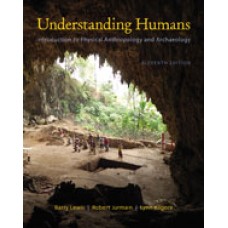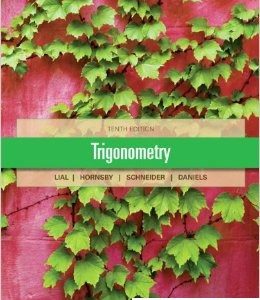This is completed downloadable of Solution Manual for Cengage Advantage Books Understanding Humans An Introduction to Physical Anthropology and Archaeology, 11th Edition

Product Details:
- ISBN-10 : 1111831777
- ISBN-13 : 978-1111831776
- Author:
UNDERSTANDING HUMANS: INTRODUCTION TO PHYSICAL ANTHROPOLOGY AND ARCHAEOLOGY shows students how anthropologists and archaeologists go about their work as they study human evolution, living nonhuman primates, human adaptation and variation, the origin and dispersal of modern humans, food production, the first civilizations of the Old and New Worlds, and so much more. Using a biocultural approach, the text balances the presentation of physical anthropology with archaeology and concludes with a new chapter that ties together the material on human biological and cultural adaptation by focusing on lessons learned from our species evolution such as the impact of humans on the environment. Students will also benefit from the new chapter opening learning objectives, “At a Glance” sections that summarize key concepts, and end-of-chapter “Critical Thinking Questions” that help students better understand the material and study more effectively for exams.
Table of Content:
- Part 1: Anthropology
- Ch 1: Introduction to Anthropology
- Learning Objectives
- The Biocultural Approach
- What is Anthropology?
- The Scientific Method
- The Anthropological Perspective
- Summary of Main Topics
- Critical Thinking Questions
- Part 2: Heredity and Evolution
- Ch 2: The Development of Evolutionary Theory
- Learning Objectives
- A Brief History of Evolutionary Thought
- Natural Selection
- Constraints on Nineteenth-Century Evolutionary Theory
- Opposition to Evolution
- Summary of Main Topics
- Critical Thinking Questions
- Ch 3: Heredity and Evolution
- Learning Objectives
- The Cell
- DNA Structure and Function
- Cell Division: Mitosis and Meiosis
- The Genetic Principles Discovered by Mendel
- Misconceptions Regarding Dominance and Recessiveness
- Polygenic Inheritance
- Genetic and Environmental Factors
- Mitochondrial Inheritance
- New Frontiers
- Modern Evolutionary Theory
- Factors That Produce and Redistribute Variation
- Natural Selection Acts on Variation
- Summary of Main Topics
- Critical Thinking Questions
- Ch 4: Modern Human Variation and Adaptation
- Learning Objectives
- Historical Views of Human Variation
- The Concept of Race
- Contemporary Interpretations of Human Variation
- Human Biocultural Evolution
- Population Genetics
- The Adaptive Significance of Human Variation
- The Continuing Impact of Infectious Disease
- Summary of Main Topics
- Critical Thinking Questions
- Ch 5: Macroevolution: Processes of Vertebrate and Mammalian Evolution
- Learning Objectives
- How We Connect: Discovering the Human Place in the Organic World
- Principles of Classification
- Constructing Classifications and Interpreting Evolutionary Relationships
- Definition of Species
- Interpreting Species and Other Groups in the Fossil Record
- What are Fossils and How Do They Form?
- Vertebrate Evolutionary History: A Brief Summary
- Mammalian Evolution
- The Emergence of Major Mammalian Groups
- Processes of Macroevolution
- Summary of Main Topics
- Critical Thinking Questions
- Part 3: Primates
- Ch 6: An Overview of the Primates
- Learning Objectives
- Primate Characteristics
- Primate Adaptations
- Primate Classification
- A Survey of the Living Primates
- Endangered Primates
- Summary of Main Topics
- Critical Thinking Questions
- Ch 7: Primate Behavior
- Learning Objectives
- The Evolution of Behavior
- Why be Social?
- Primate Social Behavior
- Reproduction and Reproductive Behaviors
- Mothers, Fathers, and Infants
- Primate Cultural Behavior
- Language
- The Primate Continuum
- Summary of Main Topics
- Critical Thinking Questions
- Part 4: Paleoanthropology/Fossil Hominins
- Ch 8: Understanding the Past: Archaeological and Paleoanthropological Methods
- Learning Objectives
- Biocultural Evolution: The Human Capacity for Culture
- Paleoanthropology
- Archaeology
- Piecing Together the Past
- Dating Methods
- Paleoanthropology and Archaeology at Olduvai Gorge
- Summary of Main Topics
- Critical Thinking Questions
- Ch 9: Hominin Origins
- Learning Objectives
- Early Primate Evolution
- Miocene Fossil Hominoids: Closer Connections to Apes and Humans
- Understanding Our Direct Evolutionary Connections: What’s a Hominin?
- Walking the Walk: The Bipedal Adaptation
- Digging for Connections: Early Hominins from Africa
- Pre-Australopiths (6.0+ -4.4 mya)
- Australopiths (4.2-1.2 mya)
- Closer Connections: Early Homo (2.0+-1.4 mya)
- The Lower Paleolithic Period: Emergence of Human Culture
- Interpretations: What Does It All Mean?
- Seeing the Big Picture: Adaptive Patterns of Early African Hominins
- Summary of Main Topics
- Critical Thinking Questions
- Ch 10: The First Dispersal of the Genus Homo: Homo Erectus and Contemporaries
- Learning Objectives
- A New Kind of Hominin
- The Morphology of Homo erectus
- The First Homo Erectus: Homo Erectus from Africa
- Who were the Earliest African Emigrants?
- Homo Erectus from Indonesia
- Homo Erectus from China
- Asian and African Homo erectus: A Comparison
- Later Homo Erectus from Europe
- Archaeology of Early Hominin Dispersal
- Seeing the Big Picture: Interpretations of Homo Erectus
- Summary of Main Topics
- Critical Thinking Questions
- Ch 11: Premodern Humans
- Learning Objectives
- When, Where, and What
- Premodern Humans of the Middle Pleistocene
- Lower Paleolithic Premodern Human Culture
- Neandertals: Premodern Humans of the Late Pleistocene
- Middle Paleolithic Culture
- Molecular Connections: The Genetic Evidence
- Seeing Close Human Connections: Understanding Premodern Humans
- Summary of Main Topics
- Critical Thinking Questions
- Ch 12: The Origin and Dispersal of Modern Humans
- Learning Objectives
- Approaches to Understanding Modern Human Origins
- The Earliest Discoveries of Modern Humans
- Something New and Different: The “Little People”
- Upper Paleolithic Technology and Art
- Summary of Upper Paleolithic Culture
- Summary of Main Topics
- Critical Thinking Questions
- Part 5: Archaeology
- Ch 13: Early Holocene Hunters and Gatherers
- Learning Objectives
- Entering the New World
- The Earliest Americans
- Paleo-Indians in the Americas
- Early Holocene Hunter-Gatherers
- Case Studies of Early Holocene Cultures
- Summary of Main Topics
- Critical Thinking Questions
- Ch 14: Food Production
- Learning Objectives
- The Neolithic Revolution
- Explaining the Origins of Domestication and Agriculture
- Archaeological Evidence for Domestication and Agriculture
- Old World Farmers
- New World Farmers
- Summary of Main Topics
- Critical Thinking Questions
- Ch 15: The First Civilizations
- Learning Objectives
- Civilizations in Perspective
- Why Did Civilizations Form?
- Old World Civilizations
- New World Civilizations
- Summary of Main Topics
- Critical Thinking Questions
- Ch 16: Biocultural Evolution and the Anthropocene
- Learning Objectives
- Human Success and the Anthropocene
- Consequences of Biocultural Evolution
- Learning from the Past and Facing an Uncertain Future
- Summary of Main Topics
- Critical Thinking Questions
- Appendix A: Atlas of Primate Skeletal Anatomy
- Appendix B: Summary of Early Hominin Fossil Finds from Africa
- Appendix C: Population Genetics
- Glossary
- Bibliography
- Index





